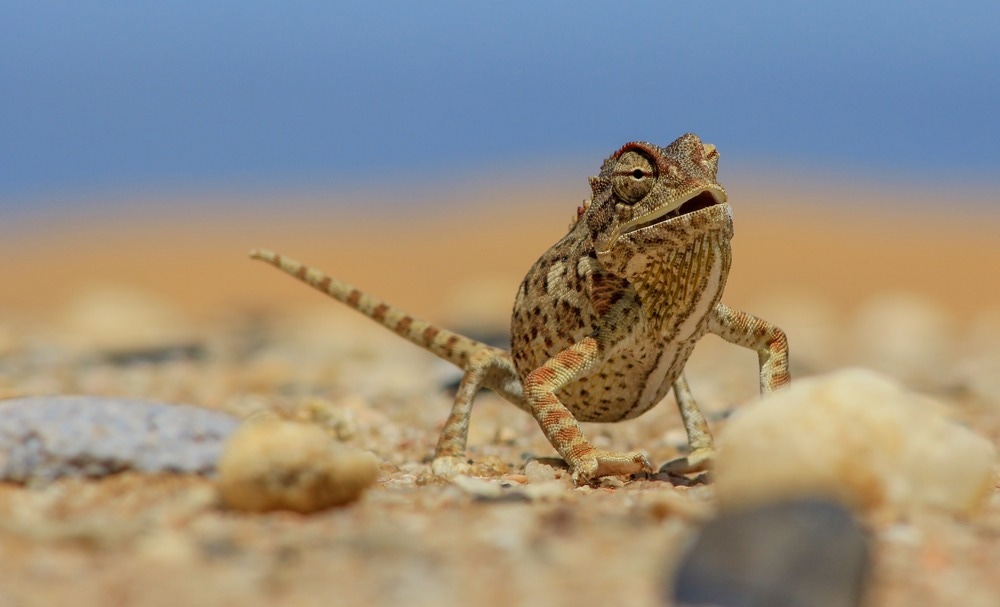Many individuals will switch off their air conditioners and turn on their heaters as summer gives way to October. However, conventional heating and cooling systems are inefficient and unsustainable since they generally consume fossil fuels. A team reported in ACS’ Nano Letters has created an energy-efficient, cost-effective covering by imitating a desert-dwelling chameleon. Without using more energy, the material can keep buildings warm in the winter or cool in the summer.

Image Credit: Chantelle Bosch/Shutterstock.com
Many desert animals have developed unique adaptations that enable them to endure in hostile habitats with significant daily temperature fluctuations. For instance, the Namaqua chameleon of southern Africa changes its color as the environment changes to control its body temperature. When it is hot outside, the creatures are light grey to reflect sunlight and stay cool. When it becomes cooler, they change dark brown to absorb heat.
This unique capacity is a naturally occurring form of passive temperature management—a feature that could be utilized to construct more energy-efficient buildings.
However, many technologies, such as cooling paints or colored steel tiles, are meant to keep buildings cold or warm and cannot move between “modes.” Fuqiang Wang and colleagues intended to produce a color-shifting covering that adjusts to changing ambient temperatures, inspired by the Namaqua chameleon.
The coating was created by combining thermochromic microcapsules, specific microparticles, and binders into a mixture sprayed or brushed onto a metal surface. The surface began to shift from dark to light grey when heated to 68 degrees Fahrenheit. The light-colored material reflected up to 93% of solar energy after it reached 86 degrees.
The material exhibited no symptoms of deterioration, even after being heated over 175 degrees for a full day. The scientists then put it through outdoor experiments on small, doghouse-sized buildings in all four seasons alongside three traditional coatings: ordinary white paint, passive radiative cooling paint, and blue steel tiles.
- The new coating was warmer than the passive radiative cooling system in winter, but both maintained similar temperatures in warmer weather.
- The new coating was substantially cooler in the summer than the white paint and steel tiles.
- During the spring and fall seasons, the new coating was the sole system that could respond to the rapidly changing temperatures by switching from heating to cooling throughout the day.
According to the researchers, this color-changing technology might save a significant amount of energy for places with numerous seasons while remaining affordable and simple to construct.
The National Natural Science Foundation of China, the Taishan Scholars of Shandong Province, the Royal Society, and the China Scholarship Council provided funds to the authors.
Journal Reference:
Dong, Y., et al. (2023) “Warm in Winter and Cool in Summer”: Scalable Biochameleon Inspired Temperature-Adaptive Coating with Easy Preparation and Construction. Nano Letters. doi:10.1021/acs.nanolett.3c02733